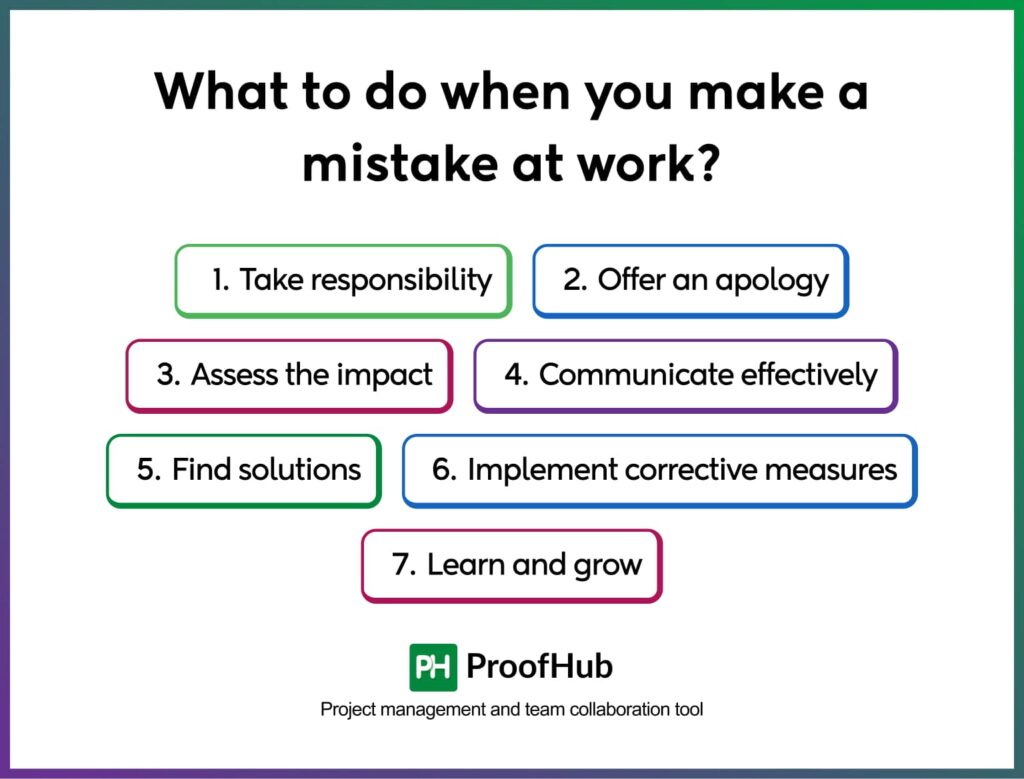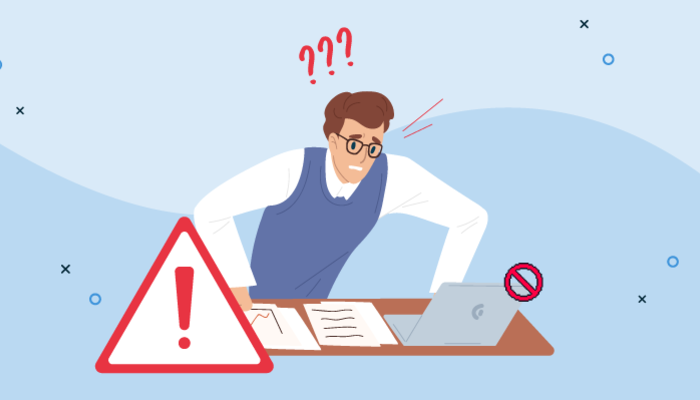How To Deal With Making A Mistake At Work

The knot in your stomach tightens as the realization hits: you’ve made a mistake at work. A missed deadline, a flawed report, a miscommunication that spiraled out of control – the possibilities are endless, and the consequences can feel devastating. For many, the immediate reaction is panic, fear of reprisal, and a desperate urge to cover it up. But experts agree that facing mistakes head-on, with honesty and a proactive approach, is the most effective way to mitigate damage and preserve your professional reputation.
The following article provides a comprehensive guide on navigating workplace errors. It includes strategies for assessing the situation, taking responsibility, communicating effectively, and learning from the experience. Drawing on expert advice and real-world examples, we'll explore how to transform a potential career setback into an opportunity for growth and development.
Assessing the Damage and Understanding the Context
Before taking any action, take a moment to fully understand the scope of the mistake. What exactly happened? What are the potential consequences? Who is affected?
Objectivity is crucial at this stage. Avoid downplaying the error, but also resist the urge to catastrophize.
Consider the organizational culture. Is your company one that encourages open communication about mistakes, or are errors met with harsh criticism?
Taking Responsibility: A Foundation of Trust
Once you have a clear understanding of the situation, the most important step is to take responsibility. This means acknowledging the mistake without making excuses or blaming others.
According to a study by the Society for Human Resource Management (SHRM), employees who quickly admit their errors are often viewed as more trustworthy and reliable. Owning up to your mistake demonstrates integrity and a commitment to accountability.
Avoid phrases like "I was only following instructions" or "It wasn't my fault because...". Instead, focus on what you did wrong and what you plan to do to rectify the situation.
Communicating Effectively: Transparency and Solutions
Deciding who to inform is a critical step. Your immediate supervisor should always be the first point of contact. Explain the mistake clearly and concisely, outlining the potential impact and your proposed solutions.
Prepare for questions. Be ready to explain your actions and the steps you're taking to fix the problem. Honesty is key, but avoid unnecessary detail or speculation.
When communicating with clients or other stakeholders, tailor your message to the specific audience. Be apologetic and empathetic, focusing on how you're working to minimize any inconvenience.
Developing a Solution: Proactive Problem-Solving
Simply admitting a mistake isn't enough. Demonstrate your commitment by actively seeking solutions. What steps can you take to correct the error and prevent it from happening again?
This might involve redoing the work, correcting data, or implementing new processes. Be prepared to go the extra mile to rectify the situation.
If the mistake has significant financial implications, explore options for mitigating the damage. Consult with colleagues or experts to identify the best course of action.
Learning from the Experience: Growth and Development
Every mistake, no matter how painful, presents an opportunity for learning and growth. Once the immediate crisis has passed, take time to reflect on what went wrong and why.
Identify any systemic issues or personal weaknesses that contributed to the error. Were there gaps in your knowledge or skills? Were you distracted or overwhelmed?
Develop a plan to address these issues. This might involve seeking additional training, improving your time management skills, or implementing new workflow strategies.
Moving Forward: Building Resilience and Trust
The experience of making a mistake can be unsettling, but it's important to remember that everyone makes errors. The key is to learn from them and move forward with renewed determination.
Rebuilding trust may take time, especially if the mistake had significant consequences. Be patient, persistent, and continue to demonstrate your commitment to quality and accountability.
By approaching mistakes with honesty, responsibility, and a proactive attitude, you can transform a potential setback into a catalyst for professional growth and development. Remember that how you handle a mistake often speaks louder than the mistake itself.





![How To Deal With Making A Mistake At Work [Infographic] I Made A Mistake At Work: The Do’s And Don'ts](https://www.niagarainstitute.com/hs-fs/hubfs/Niagara Institute - I Made A Mistake At Work Do’s And Donts Infographic (1).png?width=1480&height=2724&name=Niagara Institute - I Made A Mistake At Work Do’s And Donts Infographic (1).png)












